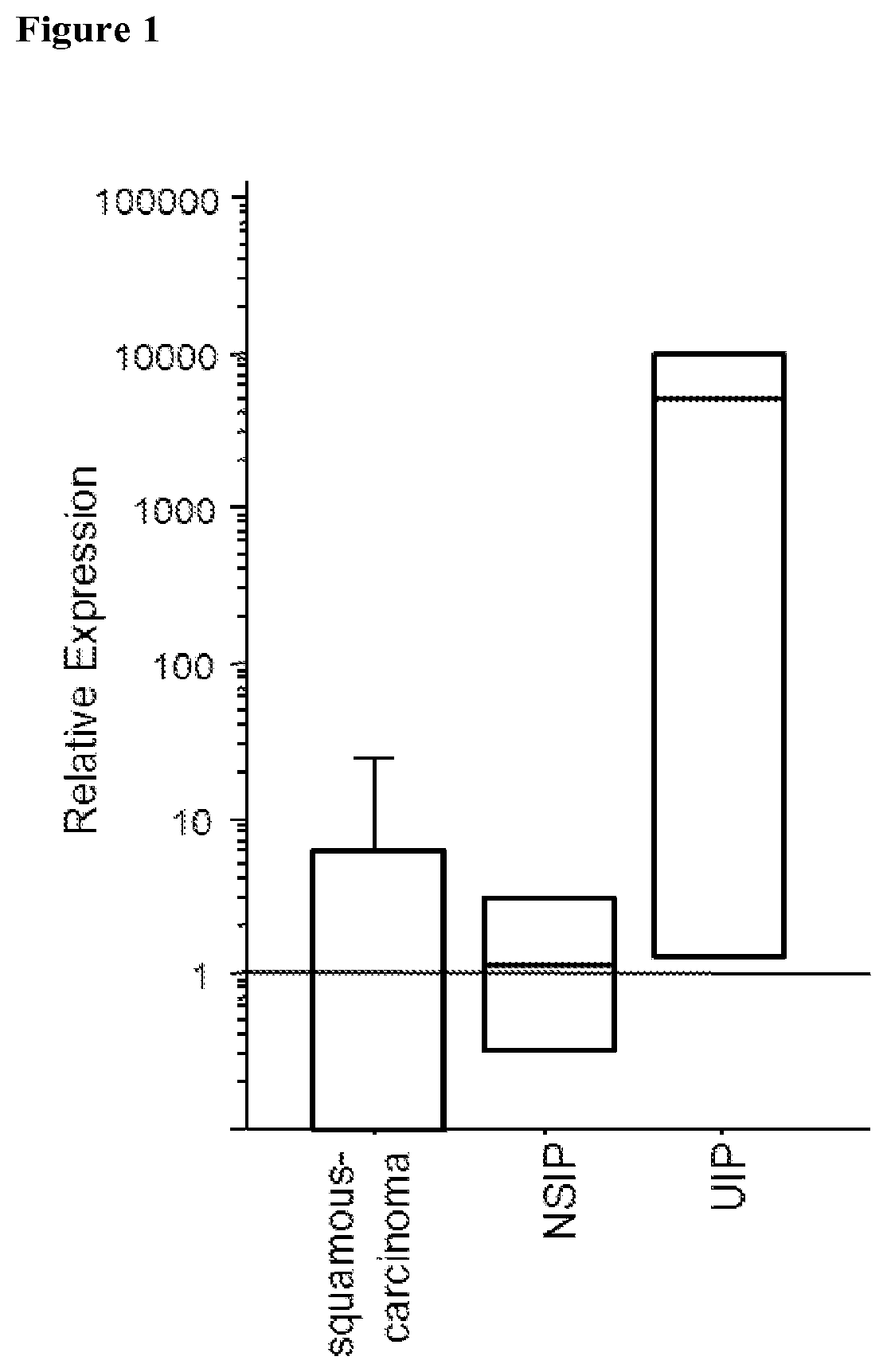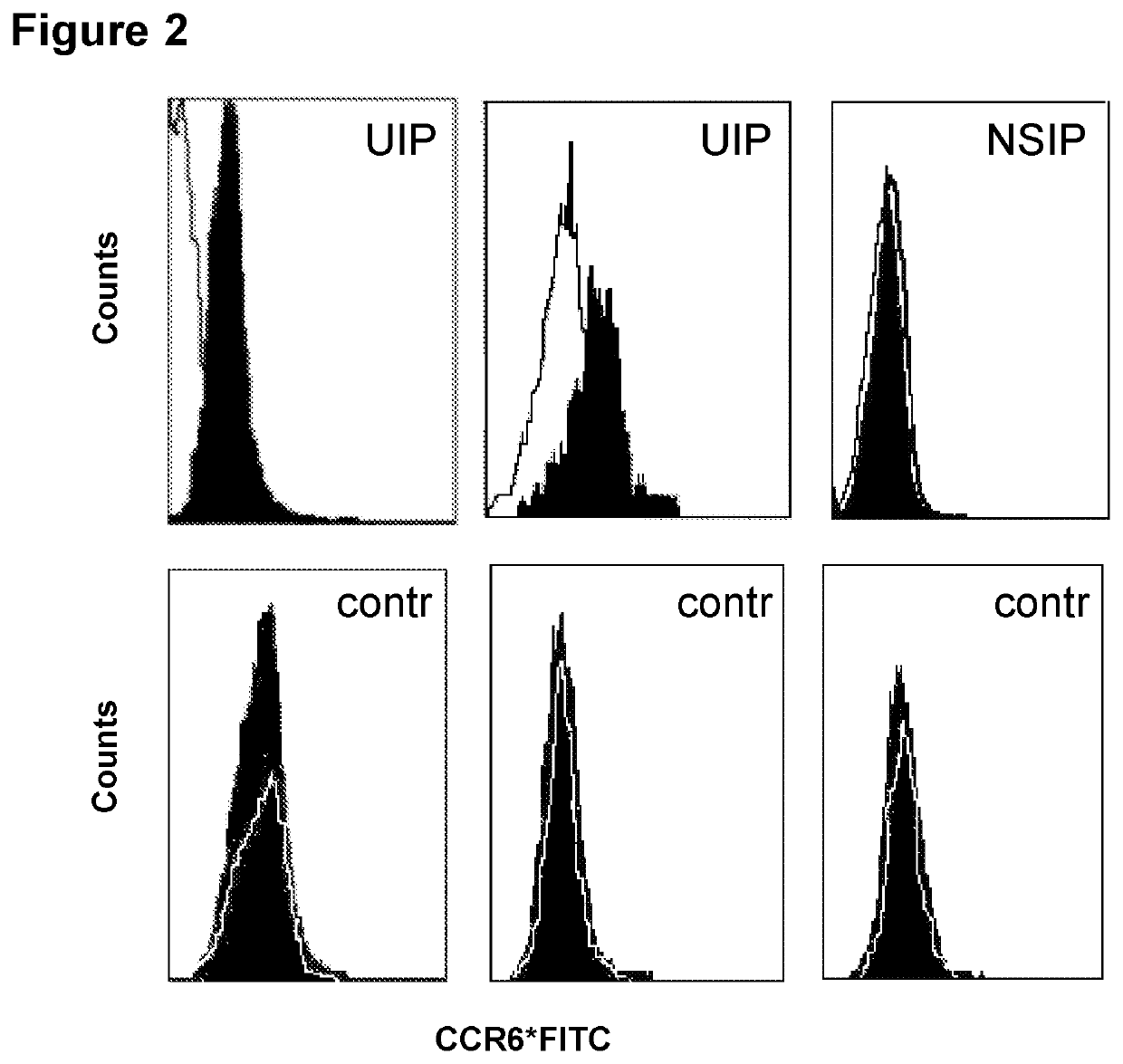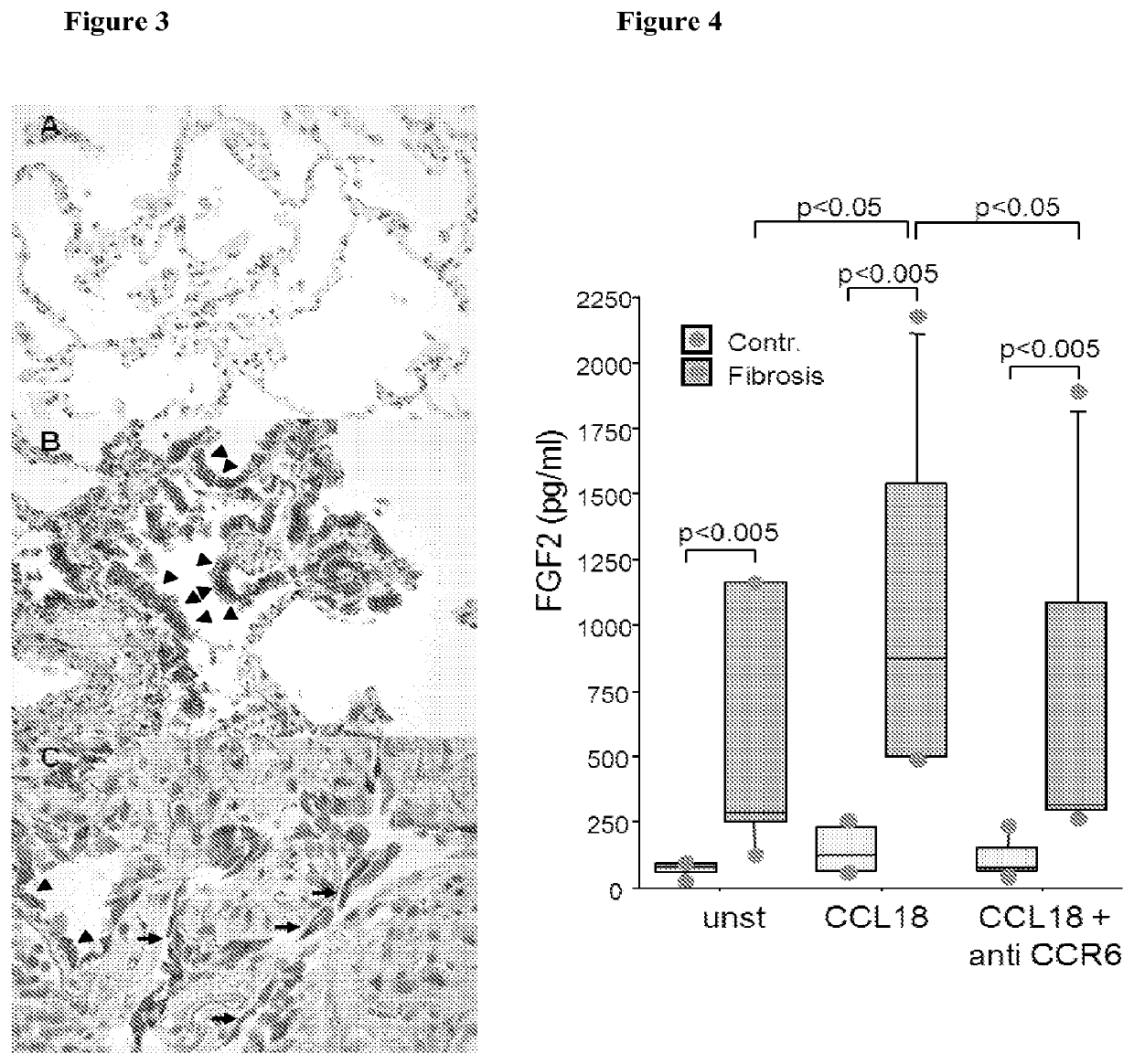Blockade of CCL18 signaling via CCR6 as a therapeutic option in treating interstitial lung disease
a technology of interstitial lung disease and ccr6 is applied in the field of blocking ccl18 signaling via ccr6 as a therapeutic option in treating interstitial lung disease, which can solve the problems of irreversible lung damage, unable to fully understand the molecular mechanisms driving the pathogenesis of said diseases, and unable to fully understand the molecular mechanisms driving their pathogenesis, etc., and achieves significant increase in the percentage of lymphocytes
- Summary
- Abstract
- Description
- Claims
- Application Information
AI Technical Summary
Benefits of technology
Problems solved by technology
Method used
Image
Examples
example 1
and Methods
[0483]For the identification of a CCL18-binding motif an established phage-display library was used (1).
Cells and Cell Lines
[0484]Fibroblast lines were established either from surgical material from pneum-ectomies or lobe-ectomies from patients suffering from various tumours or from remaining material obtained from fibrotic lungs by video-assisted thoracoscopies (VATS). The patients suffered either from adenocarcinoma of the lung, non-small cell carcinoma or squamous carcinoma. Fibrosis resulted from idiopathic pulmonary fibrosis (UIP), non-specific interstitial pneumonia, sarcoidosis, hypersensitivity pneumonitis, pneumoconiosis or systemic scleroderma. The tissue was cut in small pieces (app. 0.5 cm edge length) and placed in 6-well plates containing 1 ml Quantum 333 (PAA, Pasching, Austria) with 1% penicillin / streptomycin. Outgrowing fibroblasts were harvested when they reached approximately 80% confluence by trypsinisation, cultured in 75 cm2 cell...
example 2
ation of a CCL18-Binding Peptide Using Phage Display
[0520]After 3 circles of binding of the phages of the phage library (as described in Example 1) to plate-bound human CCL18, phage-infected E. coli were plated on agar and 20 colonies were picked, expanded and DNA was isolated for sequencing. Some of the sequences were not informative or coded for non-human gene targets, however, one sequence with a clear relation to the CC-chemokine receptor 6 (CCR6) was identified.
example 3
of CCR6 Expression on Primary Human Fibroblast Line
PCR
[0521]Expression studies using primers for CCR6 revealed a high variability of CCR6 mRNA expression. Highest expression was found in fibroblast lines derived from lung of patients suffering from usual interstial pneumonia (UIP). Lines derived from patients suffering from non-specific interstitial pneumonia (NSIP) or squamous carcinoma expressed only marginal levels of CCR6 mRNA (FIG. 1).
FACS
[0522]Flow-cytometric analyses of the established fibroblast lines revealed detectable CCR6 expression only on fibroblast lines derived from patients suffering from UIP. Lines generated from lungs of patients suffering from squamous carcinoma or NSIP do not express detectable CCR6 on their surface (FIG. 2). Increased CCR6 expression of fibroblasts from fibrotic lungs remained increased throughout all passages (data not shown).
[0523]Immunohistochemical studies on tissue sections taken from lungs of patients with IPF / UIP did ...
PUM
 Login to View More
Login to View More Abstract
Description
Claims
Application Information
 Login to View More
Login to View More - R&D
- Intellectual Property
- Life Sciences
- Materials
- Tech Scout
- Unparalleled Data Quality
- Higher Quality Content
- 60% Fewer Hallucinations
Browse by: Latest US Patents, China's latest patents, Technical Efficacy Thesaurus, Application Domain, Technology Topic, Popular Technical Reports.
© 2025 PatSnap. All rights reserved.Legal|Privacy policy|Modern Slavery Act Transparency Statement|Sitemap|About US| Contact US: help@patsnap.com



